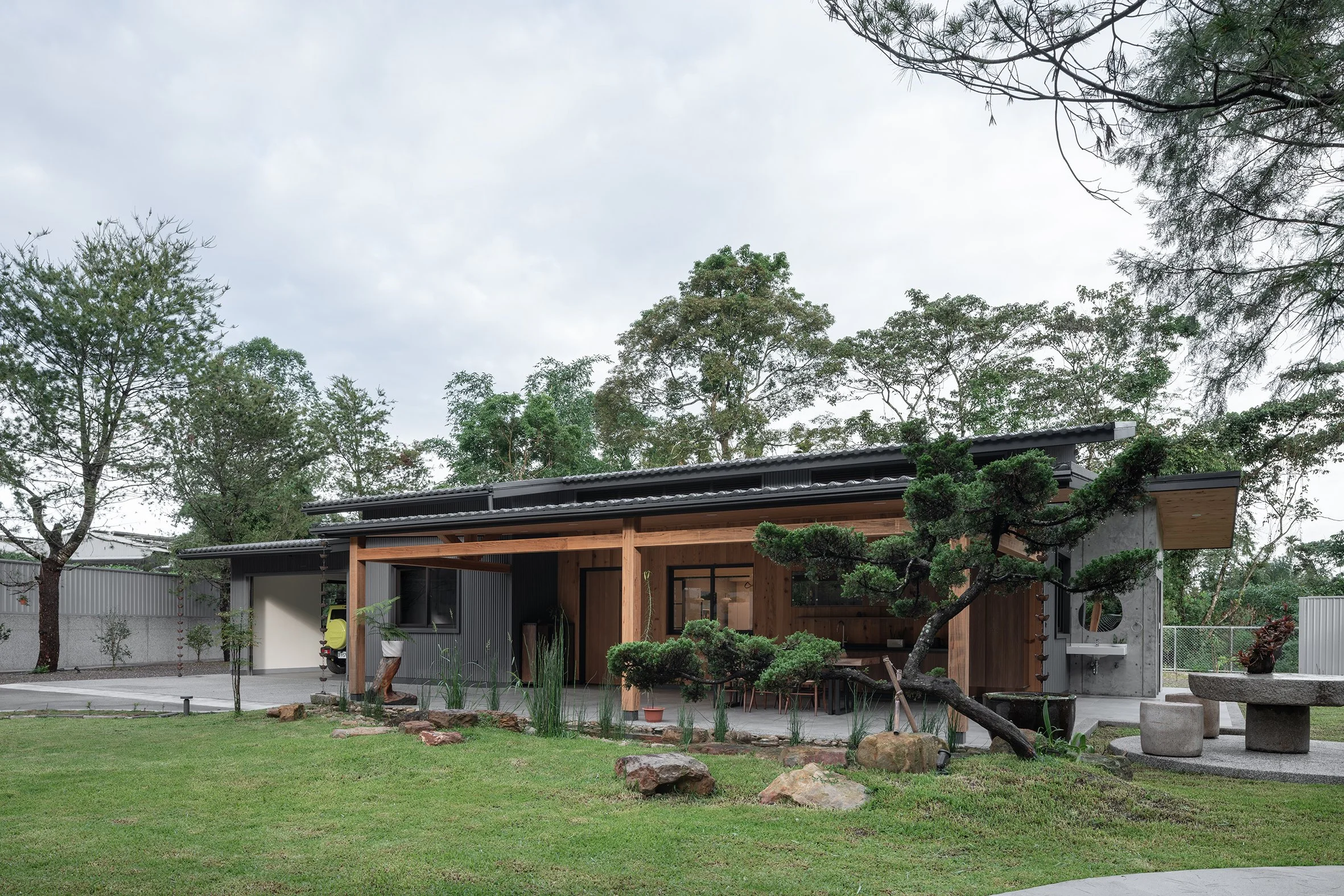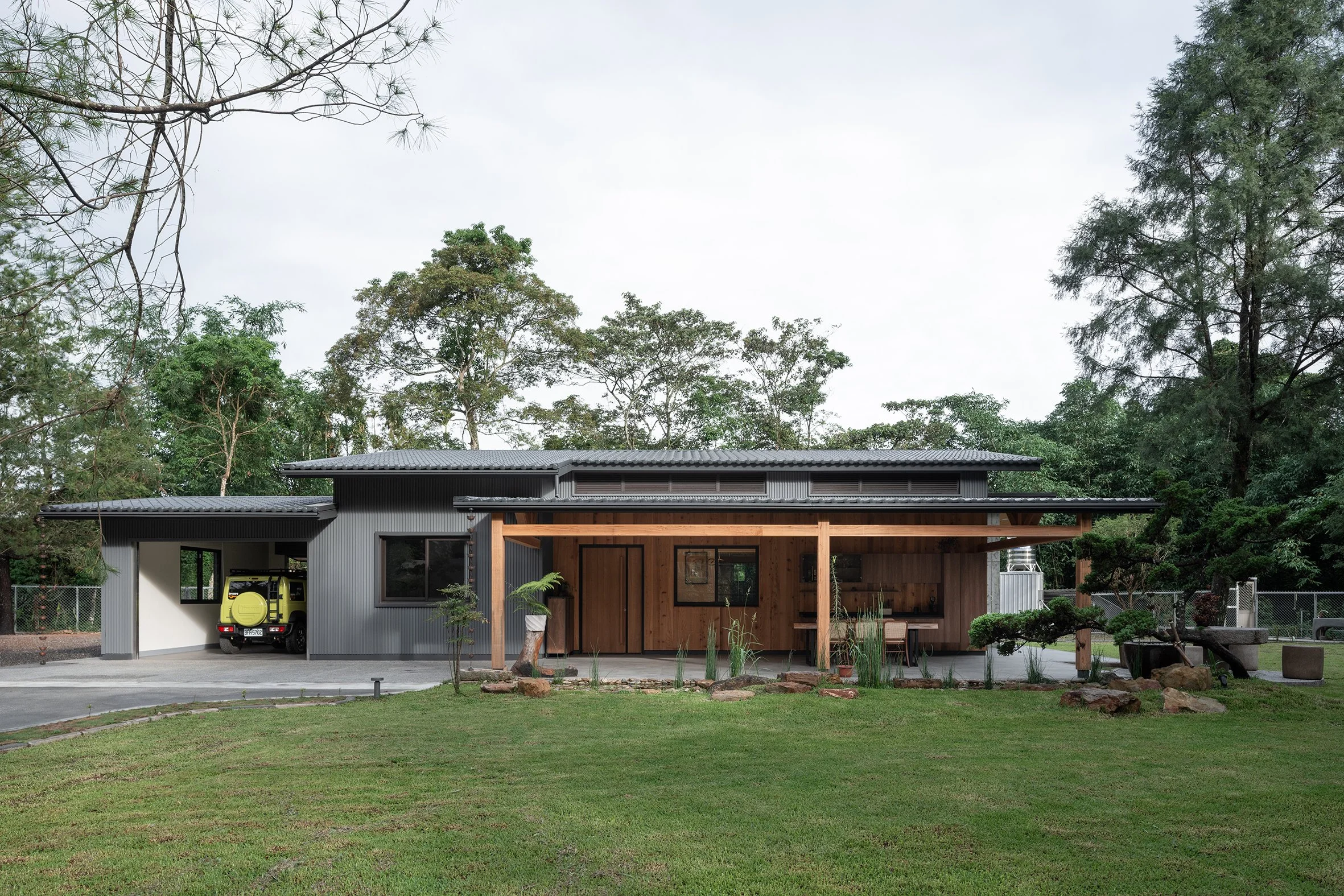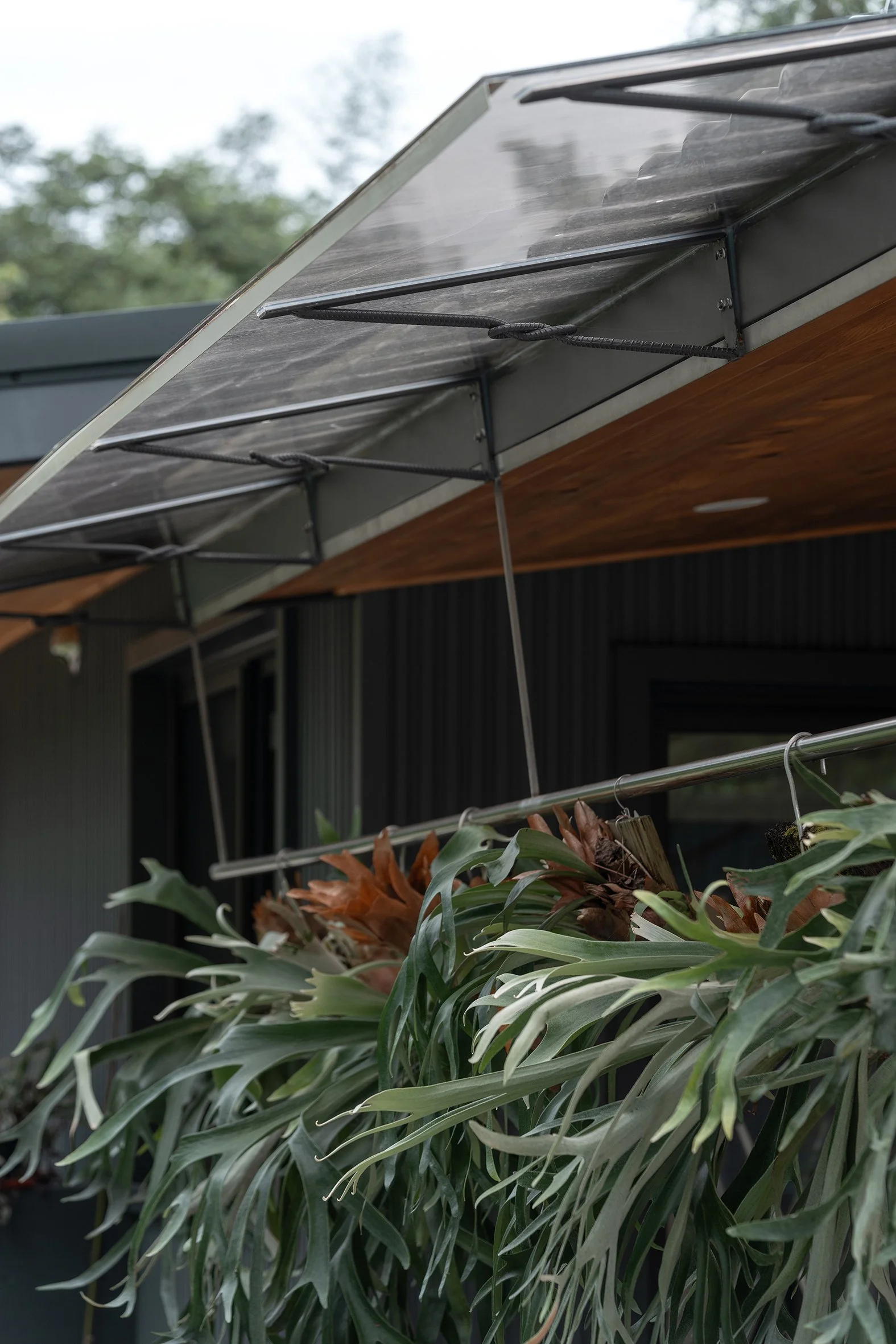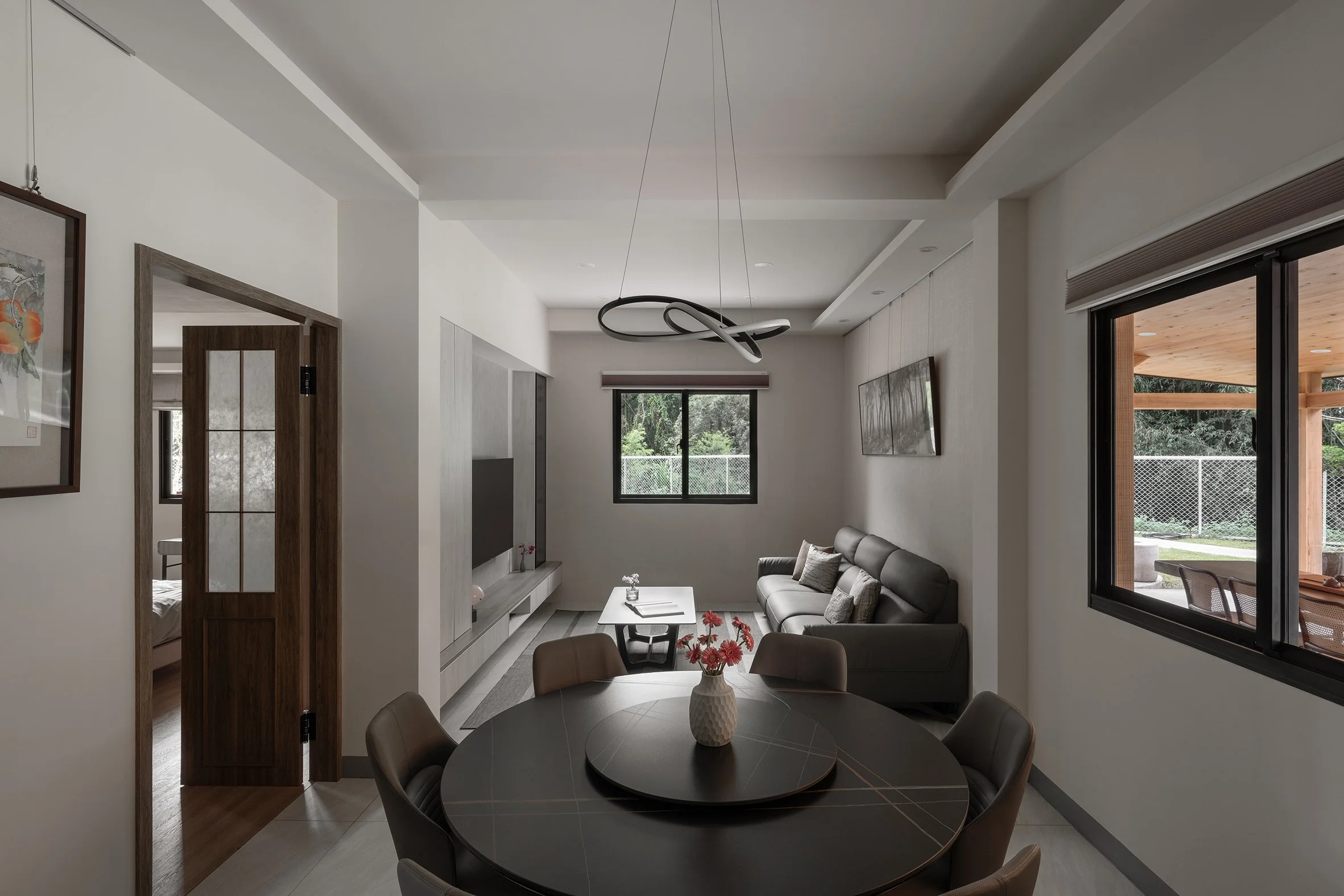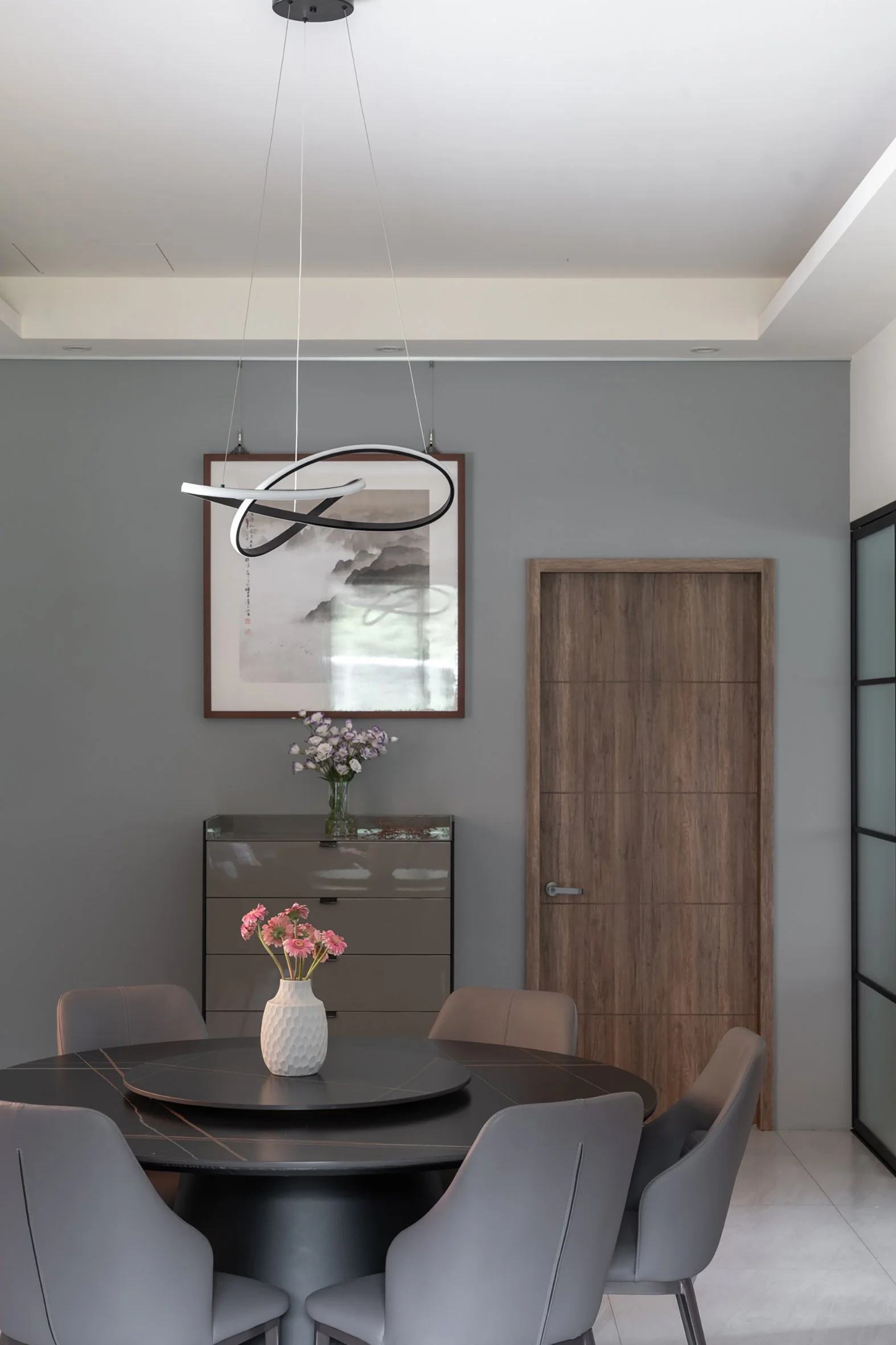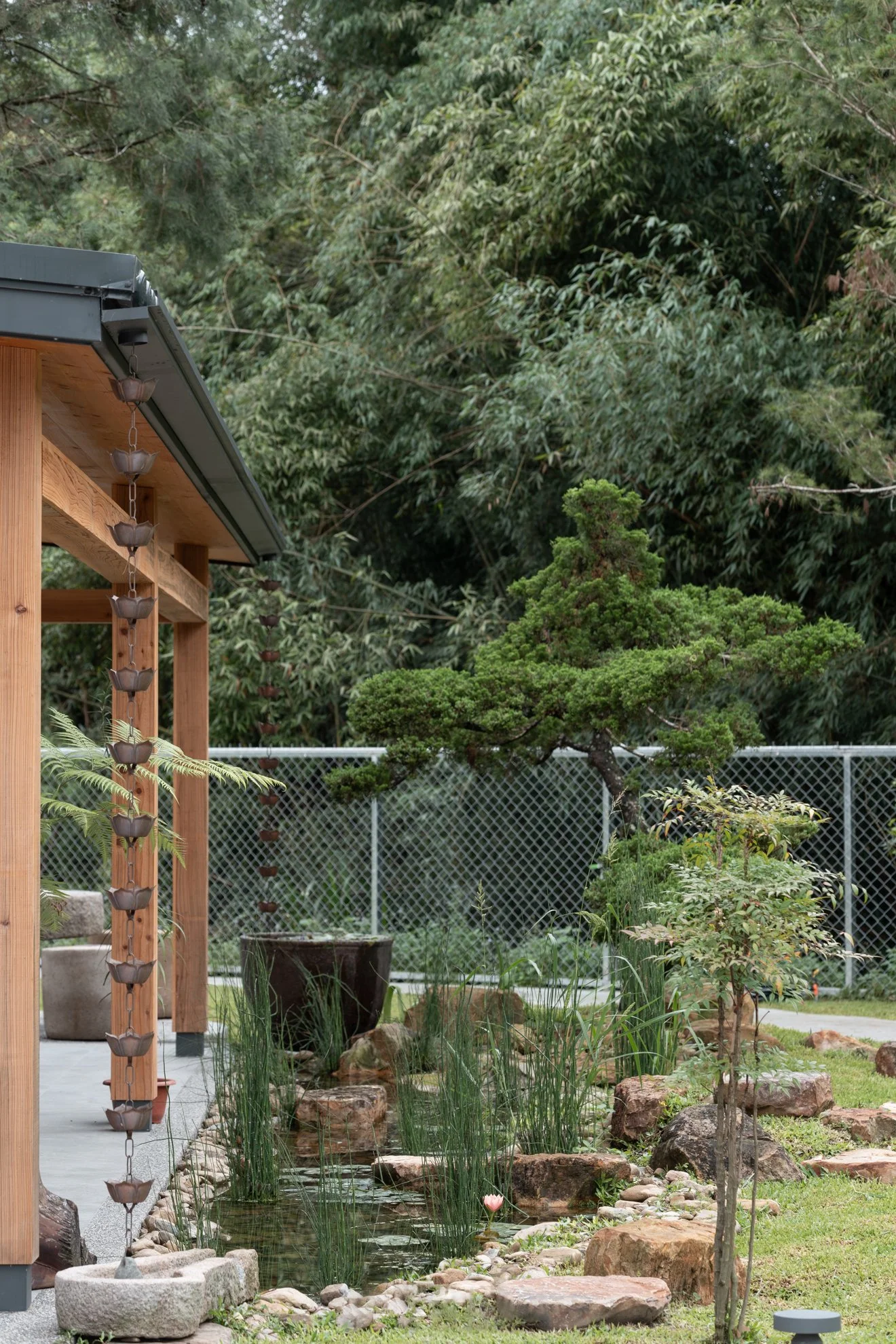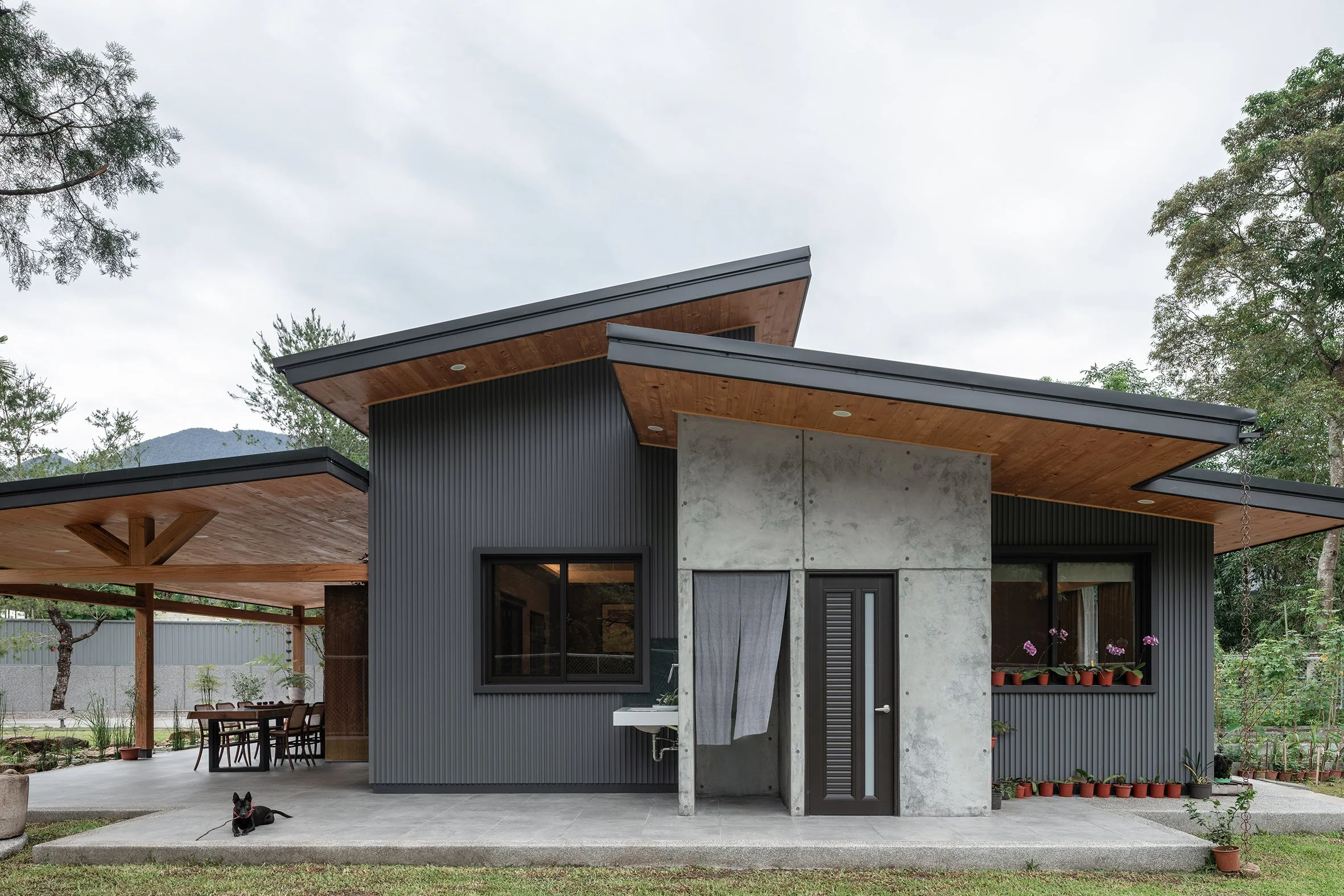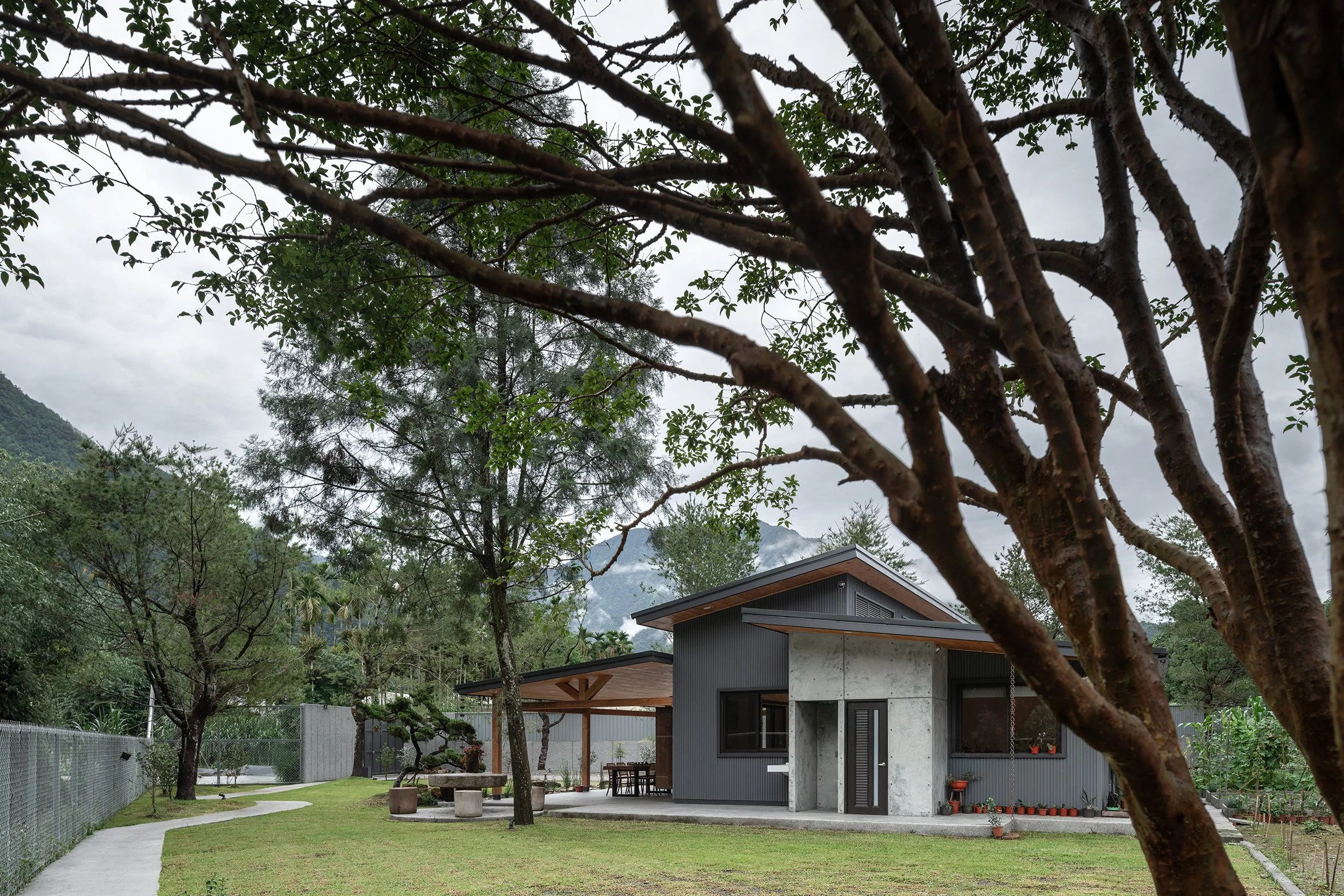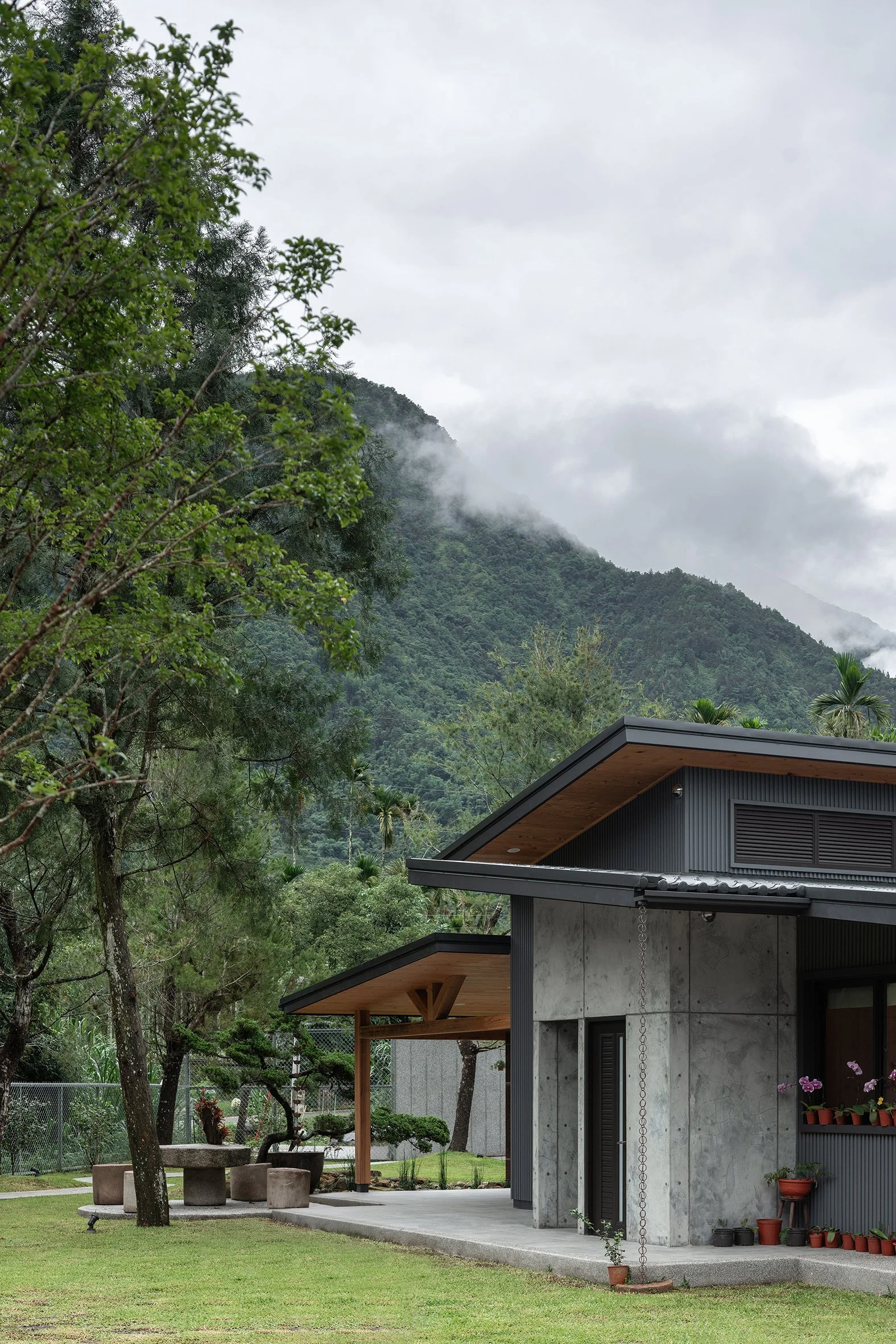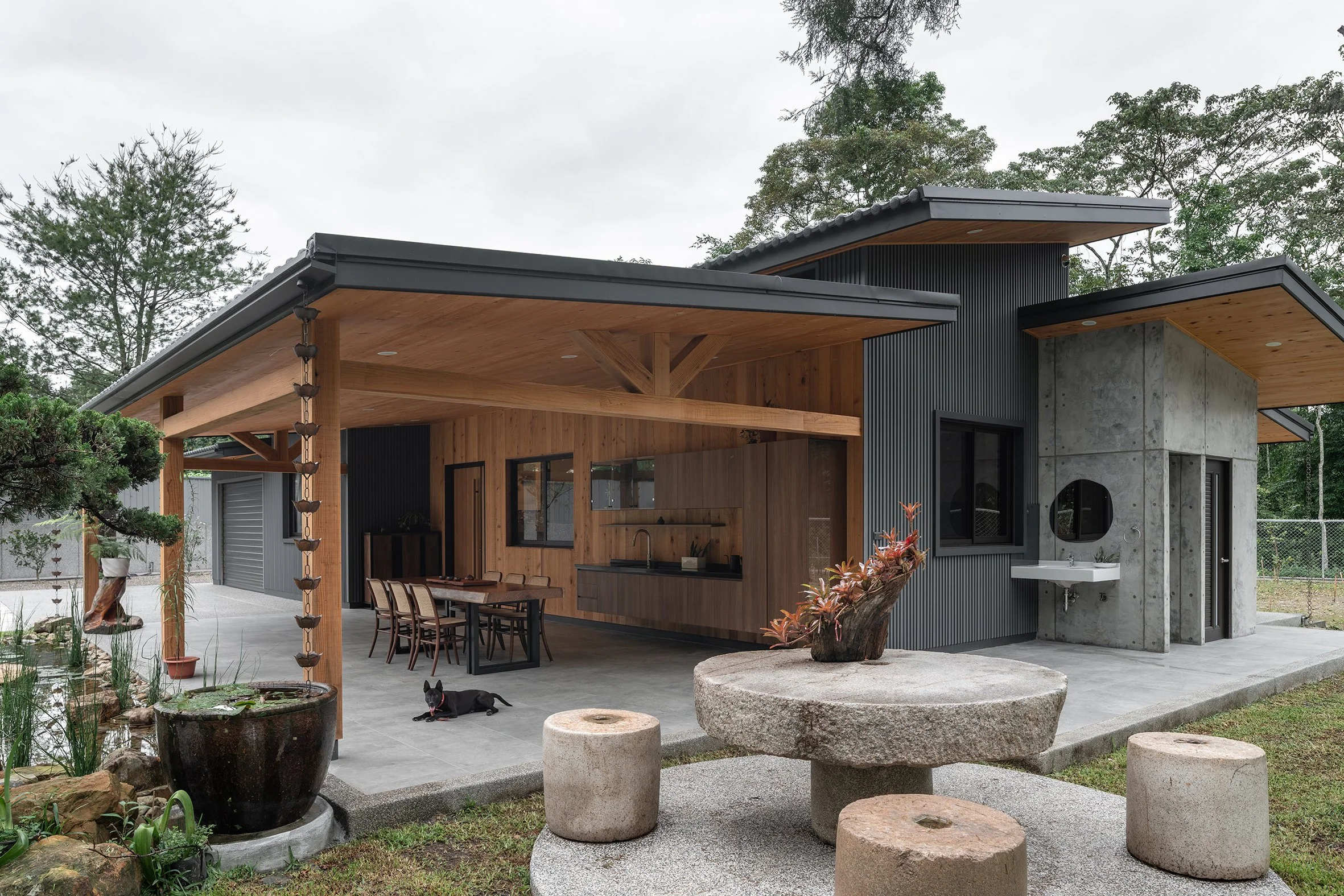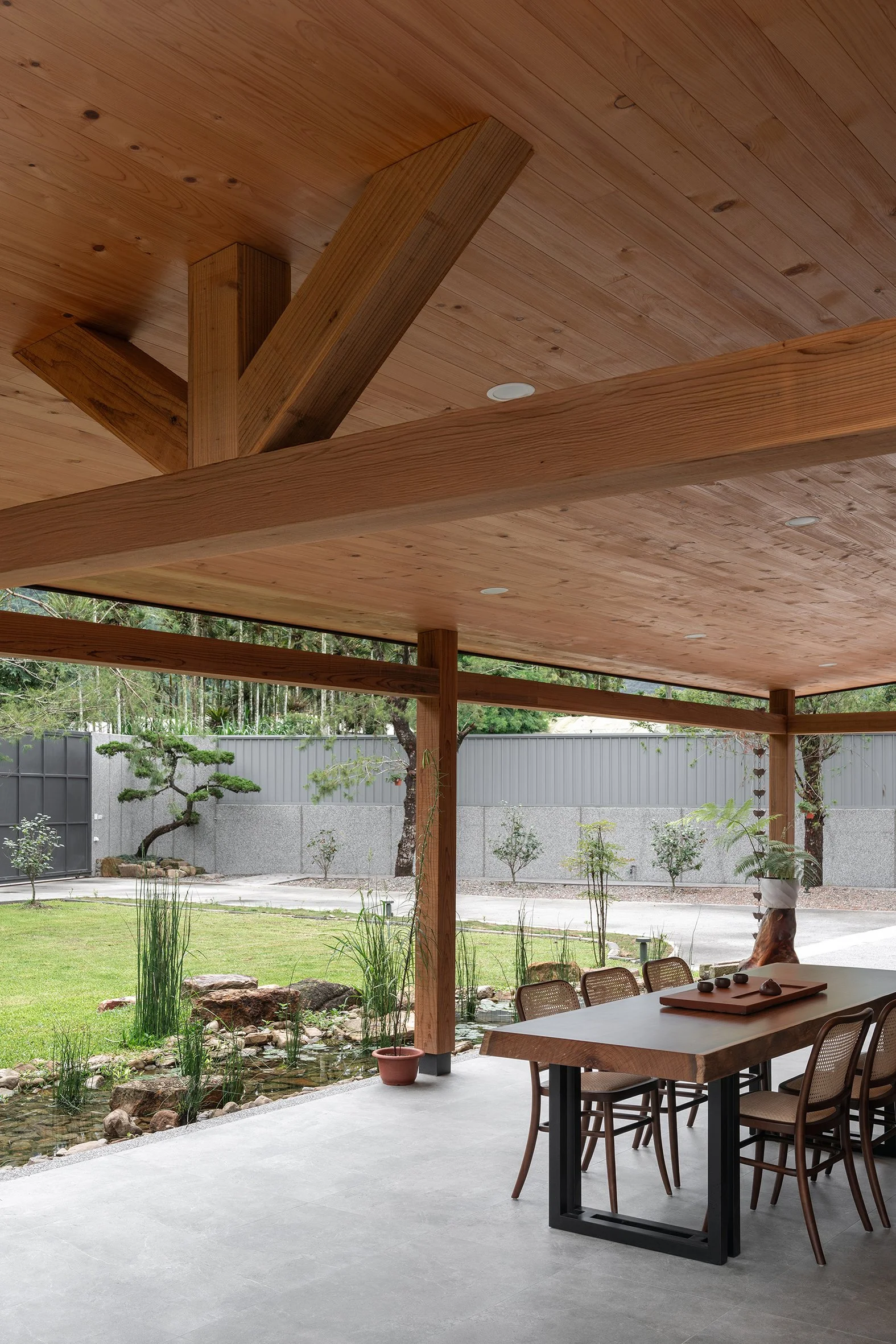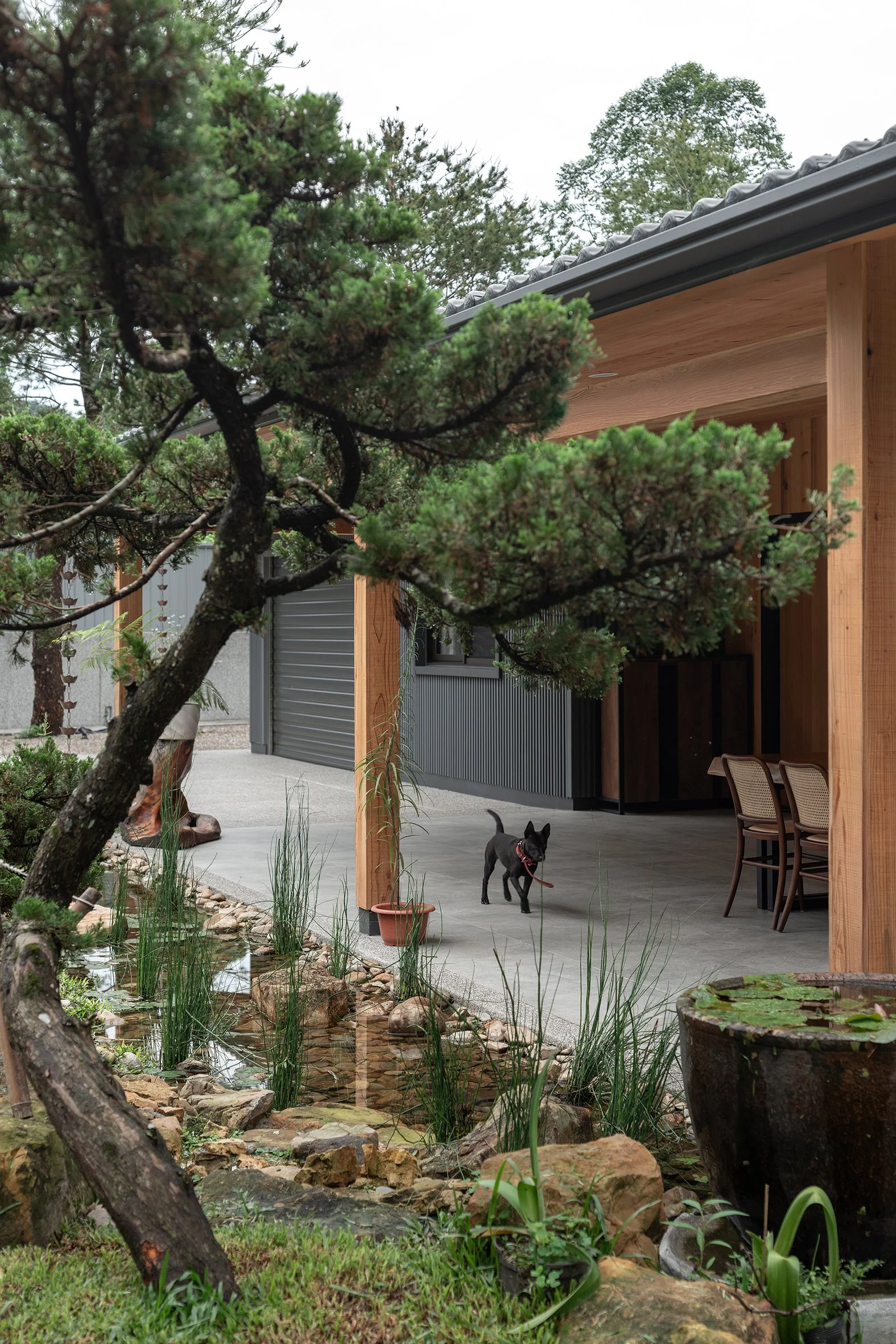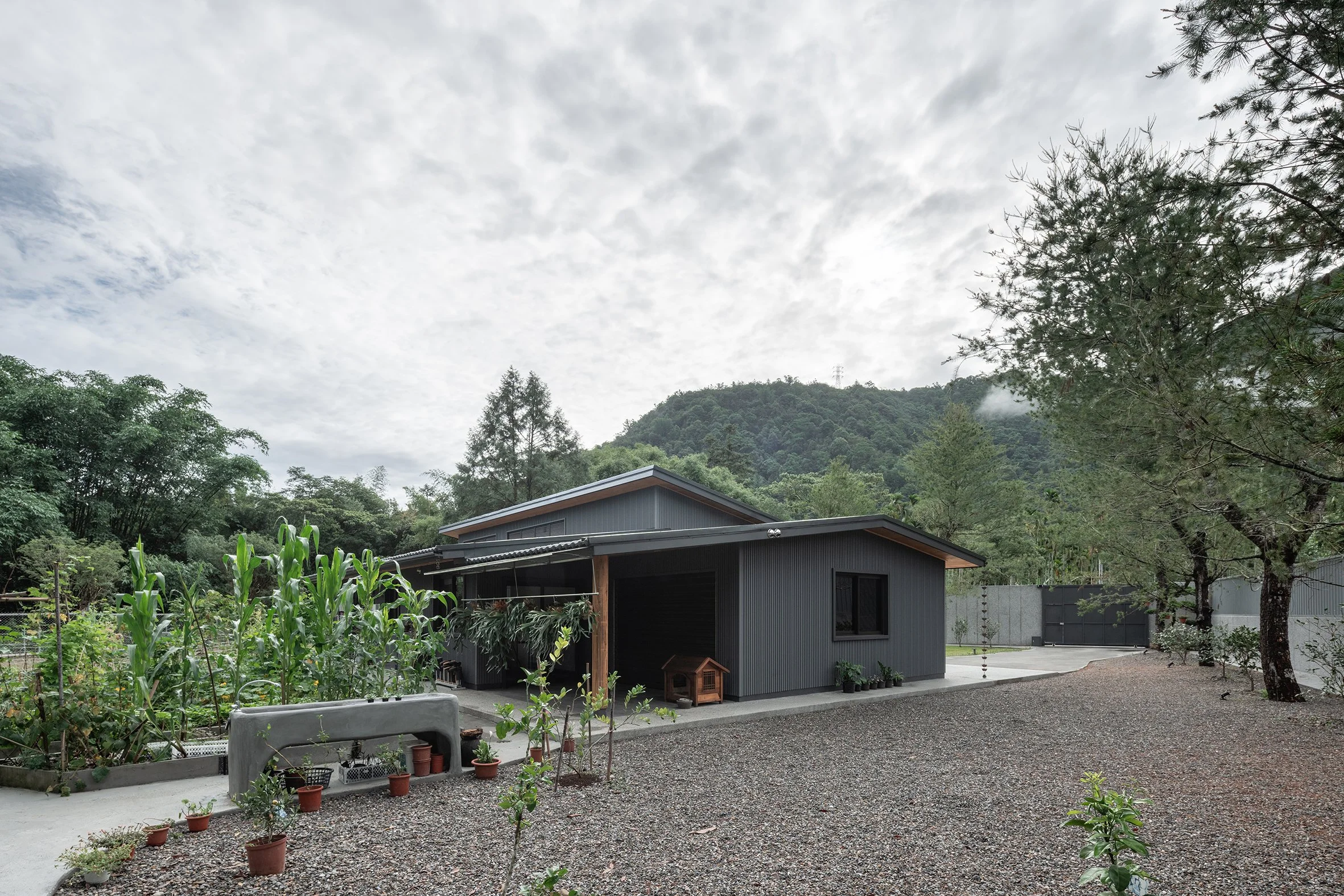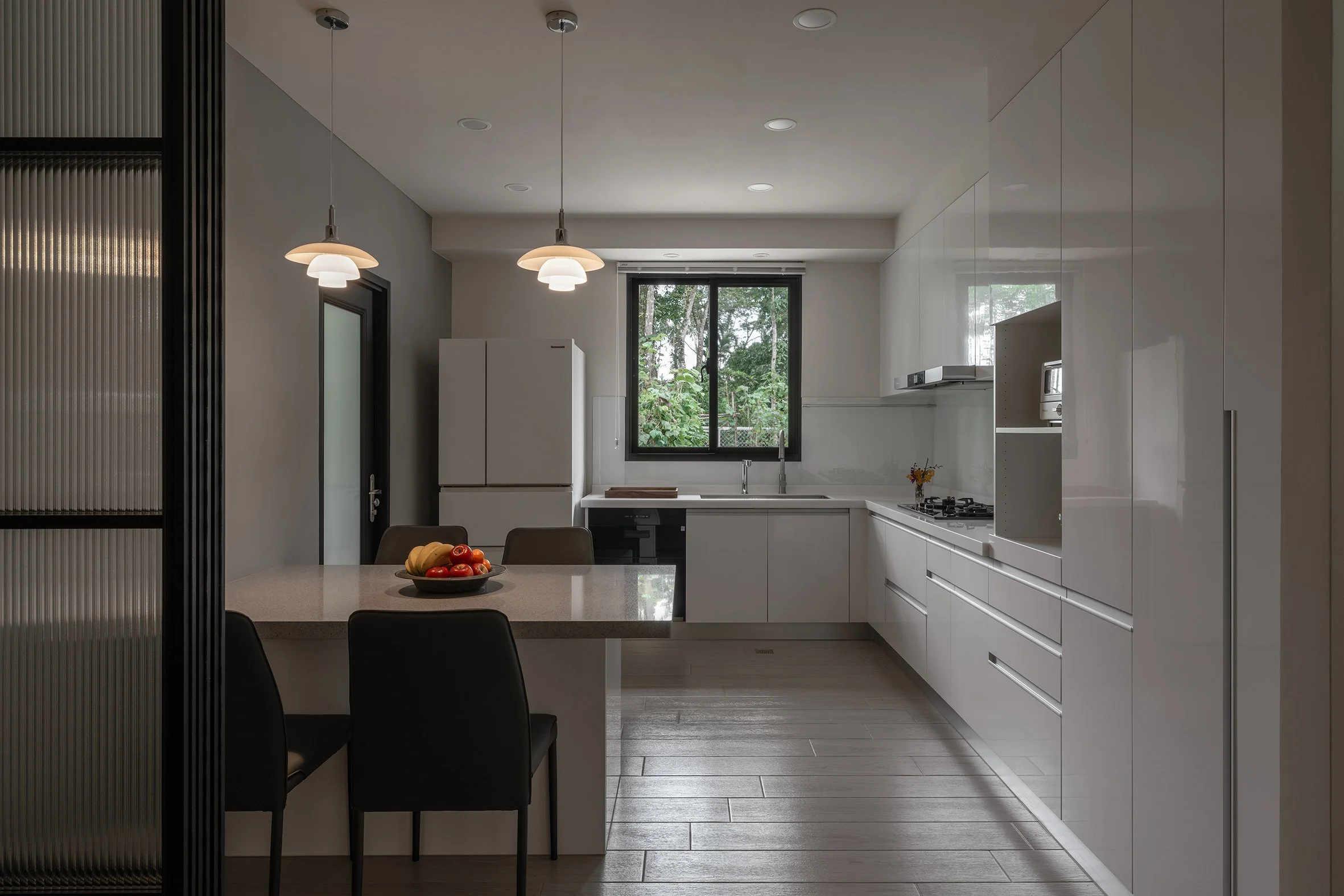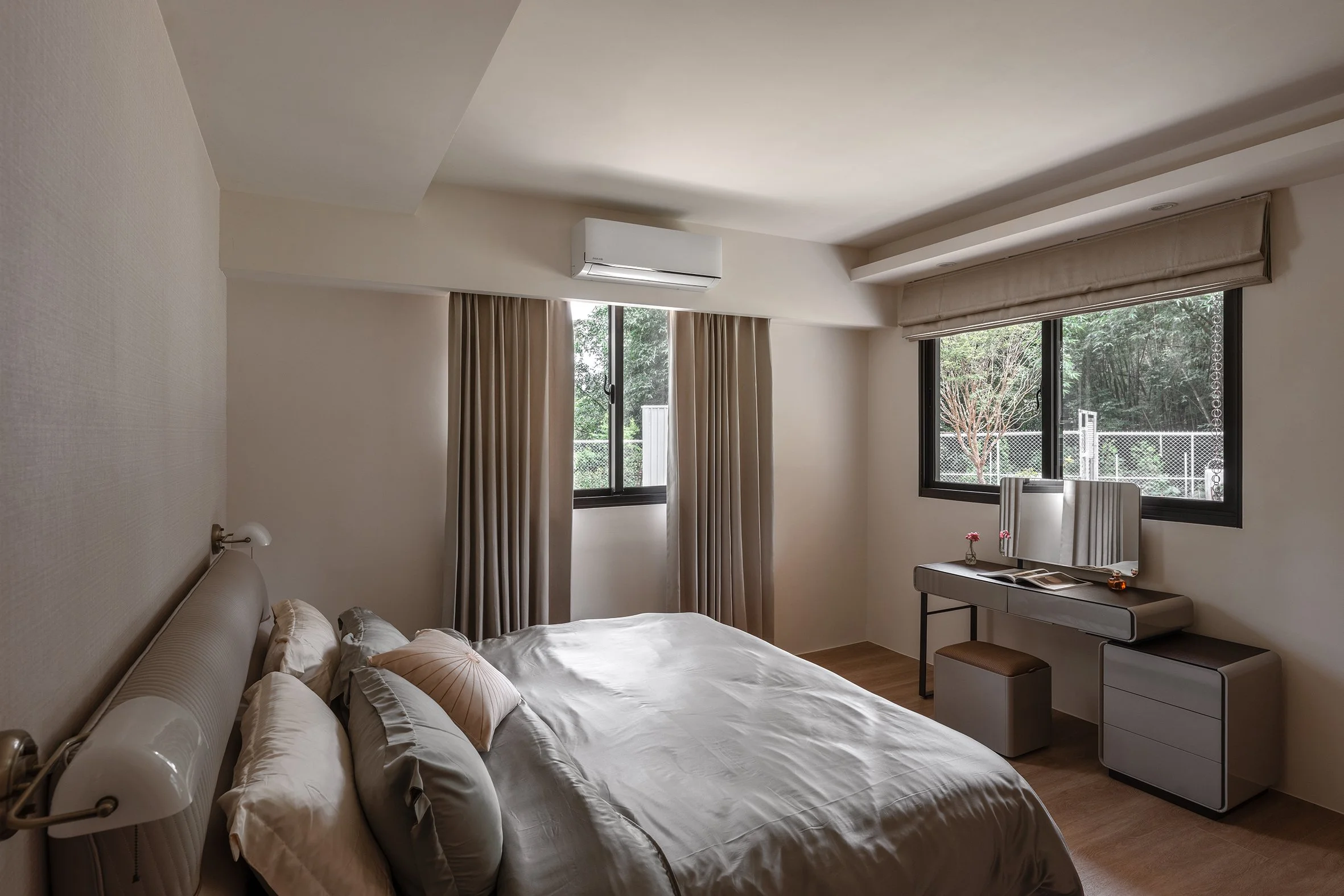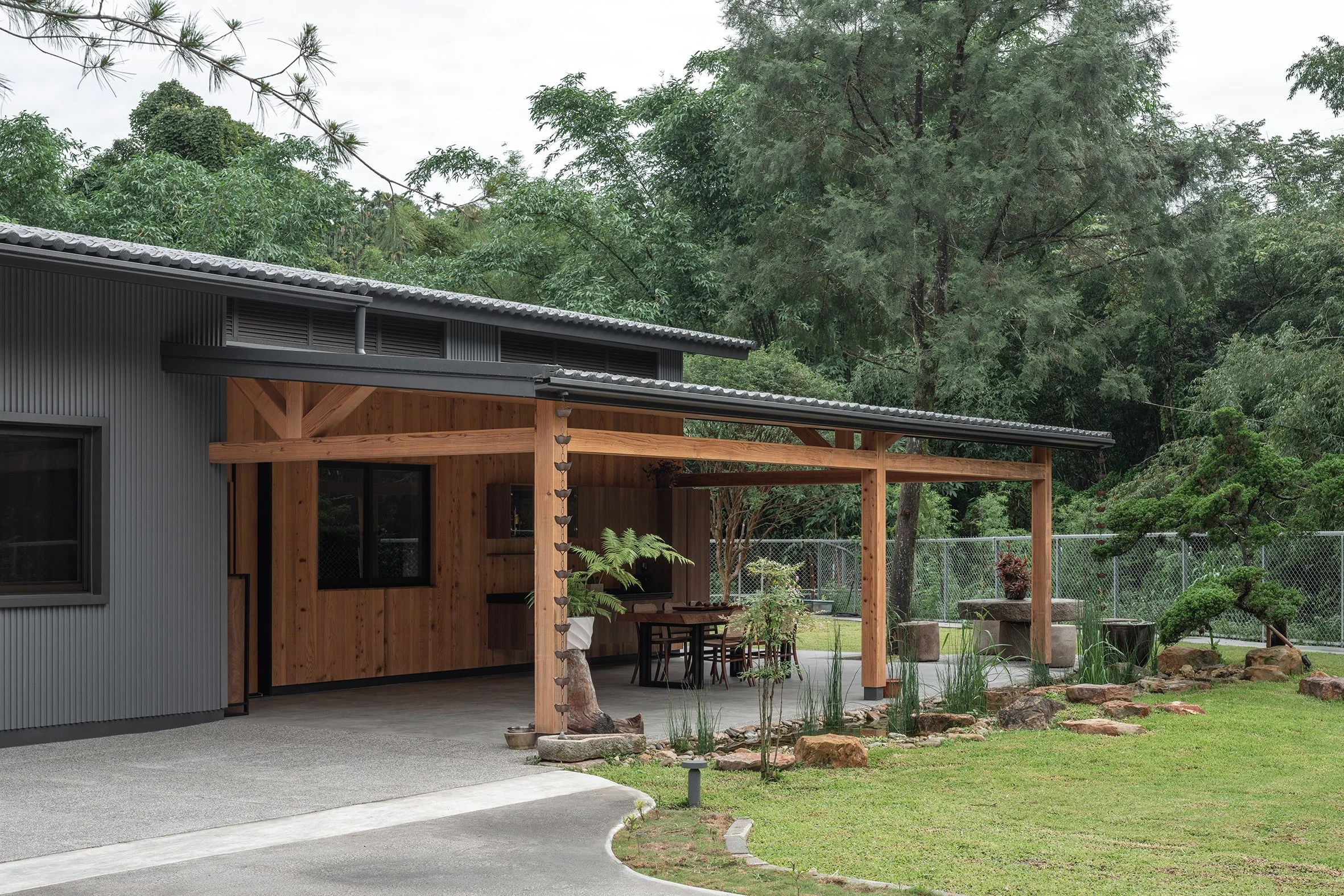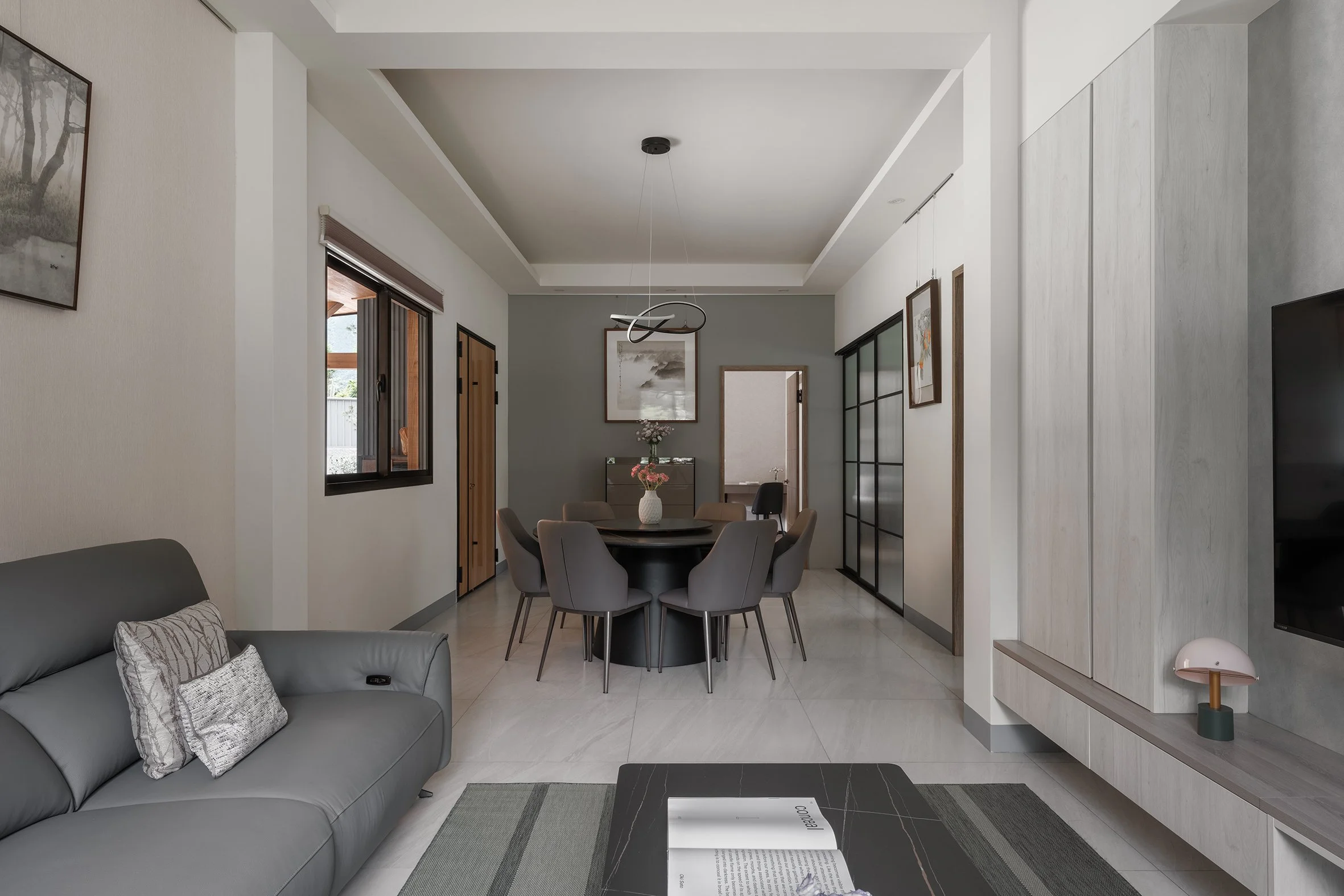Corrugate House
Located in the rural hills of Nantou, Taiwan, Corrugate House is a contemporary reinterpretation of the typical corrugated metal dwelling often seen in the countryside. In Taiwan, corrugated metal is commonly used in rural construction for its low cost and ease of assembly, but such structures are often associated with impermanence and aesthetic neglect. This project challenges that perception, demonstrating that corrugated metal can be refined, beautiful, and deeply connected to its environment.
The house was built for an elderly couple who, after spending most of their lives in Brazil, chose to return to Taiwan in their later years. For them, this house is more than a residence—it is a place of return, reflection, and rootedness, quietly celebrating the life they’ve lived and reconnecting with the land that shaped their earliest memories.
The house adopts a low, quiet presence that nestles into the surrounding forested mountains. Its simple gabled volumes are constructed from steel framing and bricks and clad in dark gray corrugated metal, paired with exposed concrete and warm cedar wood, bringing a level of material sophistication rarely seen in rural metal houses. The roof design—with slight asymmetries and deep eaves—echoes both traditional Chinese rooflines and the quiet restraint of Japanese architecture. These references are not literal but abstracted into clean, minimal forms that prioritize proportion, craft, and serenity.
The house is not adorned with luxury, but with care—with the textures of wood, the rhythm of corrugation, the patina of time, and the life that unfolds within it. While the materials speak of rural pragmatism, their detailing and composition elevate the house into something poetic. This is not just a shelter, but a statement—that rural homes can be modest yet dignified, functional yet beautiful, and that even the most humble materials can be transformed through care and design.
A generous timber-framed outdoor veranda acts as the heart of the home—an in-between space that mediates interior and exterior life. Here, the residents invite their friends to gather, converse, drink tea, and enjoy the rhythms of nature in a sheltered yet open-air setting.
The veranda forms the edge of a small creek and an open lawn stretches beyond. The sound of trickling water filters through the space, adding rhythm and calm to the everyday. This green foreground acts as both a buffer and a ceremonial threshold—inviting one to slow down before entering the home. The back of the house opens into a cultivated vegetable and fruit garden, where the elderly couple grows seasonal produce for their farm to table lifestyle.
Large windows and clerestory openings promote natural ventilation and connect the modest interior to the expansive landscape. The couple requested an interior that would remain simple and low maintenance, suitable for a slower, quieter rhythm of life. Each space is functional, light-filled, and oriented toward nature—framing views of the surrounding mountains and garden.
Location: Nantou County, Taiwan
Year: 2024-2025
Type: Residential
Status: Built
Team: Fieldnotes Architects (Architect, Interior & Landscape Designer), Zheng-Cheng Li (Contractor)
Photography: Yi-Hsien Lee & Associates (YHLAA)
